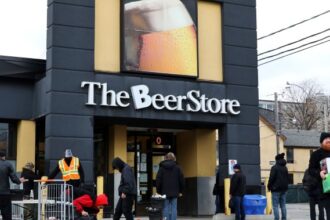In a sweeping operation that authorities are calling one of the most significant drug interdictions of the year, Canadian Border Services Agency (CBSA) officers have seized an unprecedented quantity of fentanyl and other narcotics at multiple border checkpoints across the country. The coordinated effort, conducted over a three-week period ending May 25, has dealt a substantial blow to transnational criminal organizations attempting to exploit Canada’s borders.
The operation, codenamed “Northern Shield,” resulted in the seizure of approximately 47 kilograms of fentanyl—enough to produce millions of potentially lethal doses—alongside substantial quantities of methamphetamine, cocaine, and MDMA. Officials estimate the street value of the seized narcotics exceeds $78 million.
“What makes this operation particularly notable is both the volume and sophistication of concealment methods we encountered,” said Marisa Reynolds, CBSA’s Director General of Intelligence and Enforcement Operations. “Criminal networks are becoming increasingly creative, but so are our detection capabilities.”
According to CBSA reports, the majority of seizures occurred at Pacific Highway and Ambassador Bridge crossings, with additional significant interceptions at mail processing facilities in Vancouver and Toronto. The narcotics were discovered hidden in everything from modified fuel tanks and hollowed-out furniture to industrial equipment and commercial food shipments.
The operation coincides with alarming statistics released earlier this month by Health Canada, indicating that opioid-related deaths have risen by 18% nationwide compared to this time last year. Fentanyl and its analogues continue to be the primary drivers of Canada’s ongoing opioid crisis, particularly in British Columbia, Ontario, and Alberta.
Public Safety Minister Marco Donovan praised the operation as a testament to enhanced border security measures implemented under the government’s $375 million Border Enforcement Strategy unveiled last October. “This represents exactly what we envisioned when investing in advanced screening technologies and specialized training for our border personnel,” Donovan stated at a press conference in Ottawa.
The investigation has already led to 27 arrests across multiple jurisdictions, with charges ranging from importation of controlled substances to participation in criminal organization activities. The RCMP has indicated that further arrests are expected as intelligence gathered during the operation continues to be processed.
Law enforcement agencies in the United States also participated in the coordinated effort, with U.S. Customs and Border Protection seizing connected shipments at several northern border crossings. This collaboration highlights the increasingly international nature of the fight against narcotics trafficking.
Health experts caution that while large-scale seizures are vital to disrupting supply chains, they represent only one component of addressing Canada’s complex drug crisis. “Enforcement needs to be balanced with equally robust investments in prevention, harm reduction, and treatment,” notes Dr. Elaine Chen, addiction medicine specialist at the University of Toronto. “The demand side of the equation requires just as much attention as the supply side.”
The successful operation comes amid ongoing debates in Parliament regarding proposed legislation that would increase penalties for drug trafficking offenses involving fentanyl and strengthen resources for border security.
As Canada continues to grapple with dual challenges of border integrity and public health concerns, operations like Northern Shield demonstrate both the scale of the problem and the capacity for effective intervention. Yet the question remains: in an era of increasingly sophisticated smuggling networks and potent synthetic drugs, can enforcement alone stem the tide of Canada’s deadliest public health crisis?

























